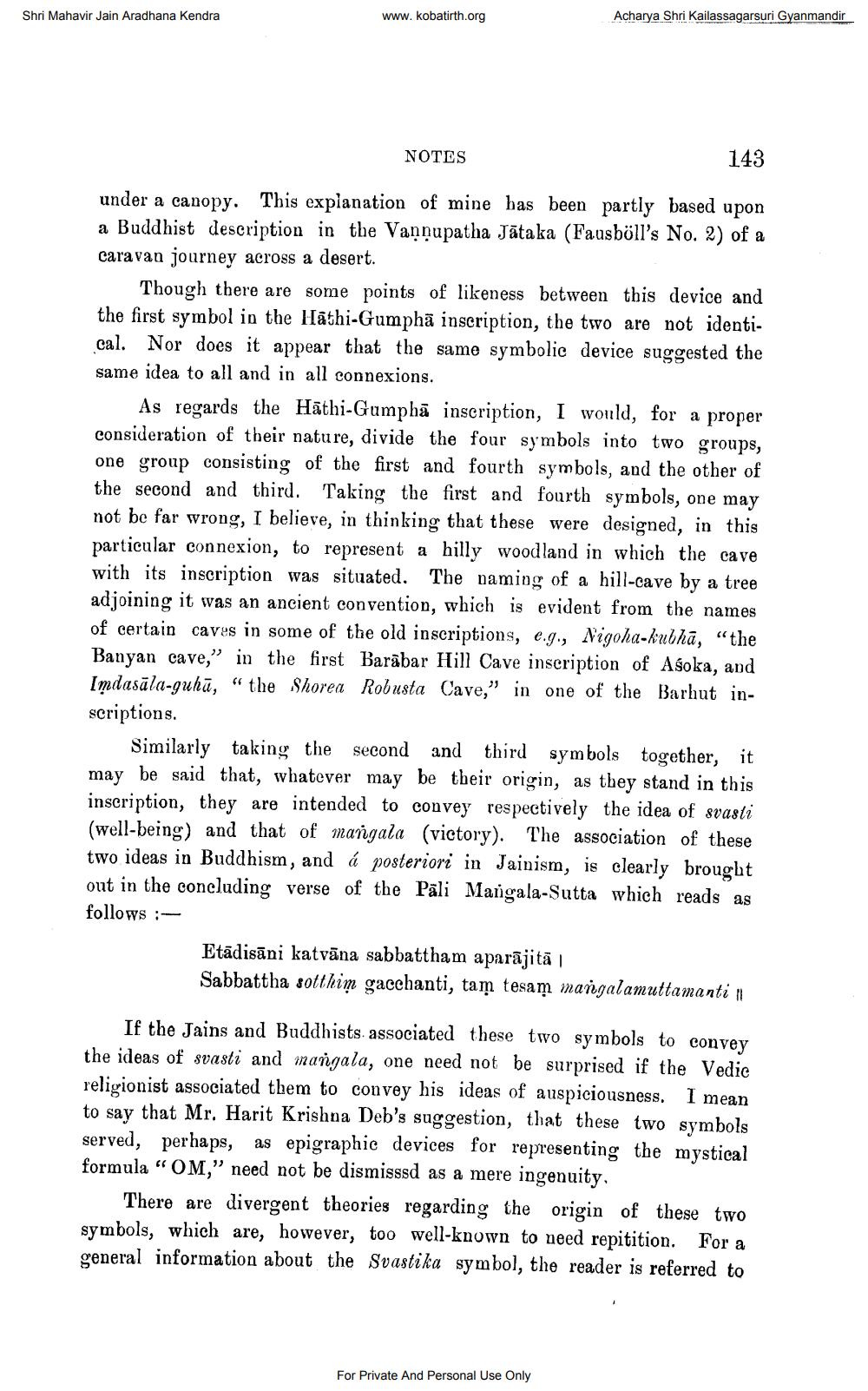________________
Shri Mahavir Jain Aradhana Kendra
Acharya Shri Kailassagarsuri Gyanmandir
www.kobatirth.org
NOTES
143
under a canopy. This explanation of mine has been partly based upon a Buddhist description in the Vannupatha Jātaka (Fausbüll's No. 2) of a caravan journey across a desert.
Though there are some points of likeness between this device and the first symbol in the Hathi-Gumphā inscription, the two are not identical. Nor does it appear that the same symbolic device suggested the same idea to all and in all connexions.
As regards the Hāthi-Gumphā inscription, I would, for a proper consideration of their nature, divide the four symbols into two groups, one group consisting of the first and fourth symbols, and the other of the second and third. Taking the first and fourth symbols, one may not be far wrong, I believe, in thinking that these were designed, in this particular connexion, to represent a hilly woodland in which the cave with its inscription was situated. The naming of a hill-cave by a tree adjoining it was an ancient convention, which is evident from the names of certain caves in some of the old inscriptions, e.g., Nigoha-kubhā, "the Banyan cave," in the first Barabar Hill Cave inscription of Asoka, and Imdasāla-guhū, "the Shorea Robusta Cave," in one of the Barhut inscriptions.
Similarly taking the second and third symbols together, it may be said that, whatever may be their origin, as they stand in this inscription, they are intended to convey respectively the idea of svasti (well-being) and that of mangala (victory). The association of these two ideas in Buddhism, and á posteriori in Jainism, is clearly brought out in the concluding verse of the Pāli Margala-Sutta which reads as follows:
Etādisāni katvāna sabbattham aparājitä / Sabbattha sotthim gacchanti, tam tesam mangalamuttamanti
If the Jains and Buddhists associated these two symbols to convey the ideas of svasti and mangala, one need not be surprised if the Vedic religionist associated them to convey his ideas of auspiciousness. I mean to say that Mr. Harit Krishna Deb's suggestion, that these two symbols served, perhaps, as epigraphic devices for representing the mystical formula “OM,” need not be dismisssd as a mere ingenuity.
There are divergent theories regarding the origin of these two symbols, which are, however, too well-known to need repitition. For a general information about the Svastika symbol, the reader is referred to
For Private And Personal Use Only




